Women’s Sports Are the Beauty Industry's Lucrative New Partnership Opportunity
- Oops!Something went wrong.Please try again later.
Brands like e.l.f. and La Roche-Posay are showing up and cashing in.
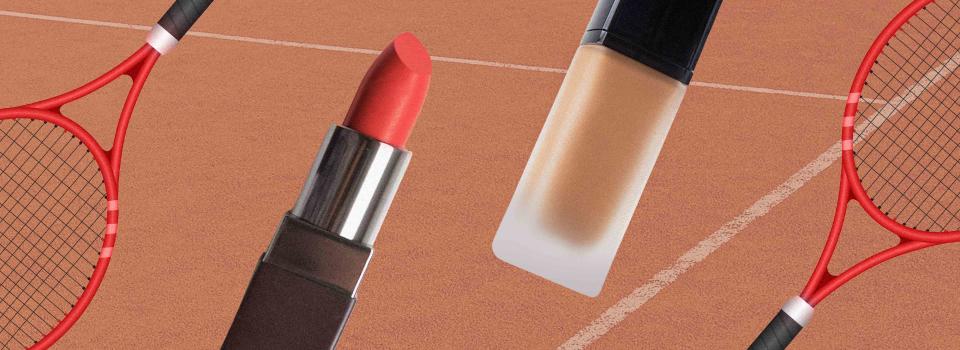
Getty Images / Byrdie
Something incredible happened at Super Bowl LVIII. (For those not privy to football vernacular, that was this year’s game.) No, it wasn’t Usher showing off his rollerskating skills or rock-solid abs; it had nothing to do with Taylor Swift… depending on who you talk to. During the telecast, beauty brands activated in a way we hadn’t seen in past years. While commercials during the Big Game typically center around topics like beer, this year we saw an untraditional amount of makeup and skincare brands catering to the game’s female demographic. Not to say beauty brands haven’t ever made moves during the telecast—Rihanna took a moment to touch up her face with Fenty Beauty Invisimatte Instant Setting + Blotting Powder during her Half Time performance at Super Bowl LVII, and brands like Olay, Secret, and Dove (which returned in 2024 with its first Super Bowl ad since 2006) have aired here and there. But this year, brands that often go viral on TikTok, like NYX Professional Makeup, e.l.f. Cosmetics, and CeraVe, all made a splash with the star power of Cardi B, Judge Judy, the Suits cast, and Michael Cera(Ve) respectively.
E.l.f. Cosmetics tested the waters with a regional spot last year featuring Jennifer Coolidge and her “dolphin skin.” I asked Kory Marchisotto, e.l.f. Cosmetics’ Chief Marketing Officer about the decision to appear on arguably the biggest stage for advertisers—again—in what, at first glance, seems to be a male-dominated audience for an exorbitant amount of money. What’s the payoff?
Why Now?
NFL Commissioner Roger Goodell shared in 2020 that the league had reached an all-time high of 187.3 million fans, with 47% of them being women. This upward trend of women sports fans was top of mind for e.l.f. Cosmetics, according to Marchisotto; in 2024, the viewing audience of the Super Bowl was 47.5% women, the highest it had been since it hit 47.1% in 2015. After their debut in 2023 with Coolidge’s ad featuring the brand’s Power Grip Primer, the product went from #2 in all of mass cosmetics to #1, and currently remains the brand’s top SKU. Power Grip was once sold every eight seconds before the spot aired—it would go on to sell one every 3.5 seconds after.
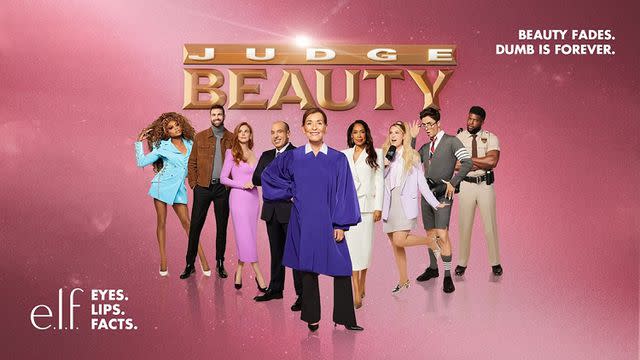
e.l.f.
Women overall showed significant growth in the viewing demographics this year: Nielsen reports that women 18 to 24 had a 24% jump from last year—undeniably influenced by Swift—and women overall had a 9% jump to 58.8 million. While no brand featured during the game was willing to share if the “Taylor Swift Effect” influenced their decision to advertise or not—outside of Cetaphil, whose regional ad all but named Taylor Swift and Travis Kelce in the spot. What is clear is that female sports fans are on the up and up. And those who have always been watching are finally being catered to.
CeraVe’s Global SVP & Head of Digital Marketing Adam Kornblum shared that the Michael CeraVe ad, which began with online chatter weeks before the game itself with a truly inspired social campaign that caused speculation about who really created CeraVe, included KPIs like winning the Super Clio (an award for the most creative commercial), “earning a billion impressions and 200 million+ video views,” driving the most traffic “ever” to CeraVe.com, and dominating brand share of voice during the Super Bowl. The brand declined to share how this converted to sales.
Clearly, there was a major incentive to engage around the Super Bowl. But sports, in general, are now captivating the same lucrative audience that beauty brands were once seeking at music festivals or events like Beautycon. There’s been in-depth discussions on platforms like TikTok naming “sporting events as the new red carpet”; it’s now a status symbol to be seen at these events. Even more interesting is the power of women’s professional leagues, like soccer, basketball, and tennis. A report from Deloitte late last year indicated that women’s elite sports will generate more than $1 billion in global revenue in 2024 for the first time ever, outpacing their original valuation three years ago by 300%. Sports like soccer and basketball are projected to perform best, with the largest geographical markets in North America and Europe. ESPN, Prime Video, and Paramount Plus have a deal with the National Women’s Social League to bring the game to more screens. And several beauty brands have kept tabs on these findings, stepped up to the plate, and developed 360 partnerships involving not just the leagues but the players themselves.
Glossier was the first brand to partner with the WNBA in 2020 and renewed its deal this year; Mielle Organics signed on as the first textured hair partner for the league in 2023. NYX is a founding-level sponsor and the exclusive (and first) makeup partner for Los Angeles’s Angel City Football Club. La Roche-Posay staked its claim in tennis by partnering with the US Open and Miami Open. Charlotte Tilbury jumped in the driver’s seat as the first female-founded and first beauty brand to sponsor F1 Academy, a project from F1 to develop and prepare female drivers to progress to higher levels of competition, in the brand’s first-ever global sports partnership. The brands integrate in several ways, from providing products for the players, branding on jerseys and practice kits, signage on the field/court/track and during broadcasts, handing out samples at games/matches, creating content with the athletes, and more.
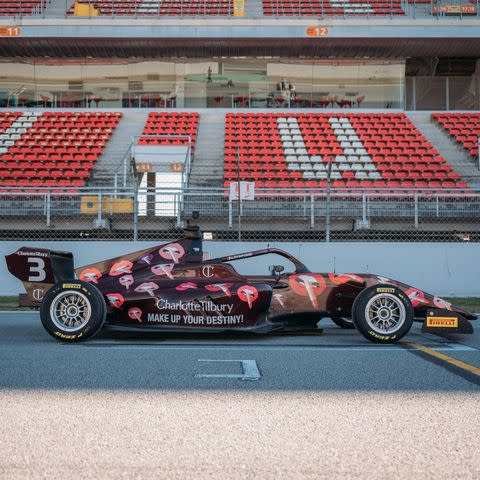
Charlotte Tilbury
The Numbers Don't Lie
Beauty brands are blitzing their way to the field (or court) because the numbers aren’t just promising—they’re substantial, and the viewer demographic is highly coveted. Women’s sports viewership is up according to Nielsen. Rain the Growth Agency reports that fans of women’s sports (or FOWS) are affluent, women’s sports are being adopted fastest by younger generations, and while the older generations like Gen X and Boomers may watch these sports predominately on linear television, all demographics within the report watch on digital and streaming, making these brand integrations and sponsorships relevant to a wider base of consumers with a multi-platform benefit.
“We want to meet our consumers where they’re at,” says Yasmin Dastmalchi, NYX Professional Makeup US General Manager. “We’ve seen the rise of viewership for sports, specifically women are watching more and more. We also looked at several different sports and saw an audience overlap, including Gen Z, with soccer, basketball, and a few others.” NYX Professional Makeupwas the first makeup brand to partner with New York Liberty in 2023 in addition to its partnership with Angel City FC and its regional Super Bowl spot this year.
For La Roche-Posay, tennis may have seemed like an obvious choice of sport, given the brand’s messaging around sun safety, but gender equality was also a top factor. Guillaume Monsel, Vice President of Marketing, La Roche-Posay USA shared that the first priority for a partnership was finding a sport that offered equal pay. In 2023, the US Open celebrated 50 years of equal prize money.
“At La Roche-Posay, we are in this ‘premium-mass’ environment, where we were looking for a premium audience—an audience that had a good balance between men and women,” says Monsel. “Also, the last few years, it blew up into this event that was beyond tennis—it became this almost fashion show of glamour; a cultural moment that people attended.”
As the first-ever sunscreen partner of the US Open, the brand’s “SOS–Save Our Skin” campaign doesn’t just advocate for sun protection but introduces the brand to fans on the ground with free samples. In its second year of partnership, the brand handed out over 400,000 packets of sunscreen. “We ran a study after (handing out samples) to understand the likelihood of the purchase intent of consumers after trying the product,” says Monsel. “70% of people that tried the products said they would come back and buy the products.” He says in addition to the samples, they sold the products at the US Open and ran out of inventory in three days.
With a reported 22% increase in the number of young women aged 18 to 24 who visited a sports website or app from 2022 to 2023, they are the fastest-growing sports audience. Not to mention women sports fans are just as engaged—if not more—than their male counterparts. Further, younger generations are interested in creating a connection and community with the teams and athletes they follow, according to Rain the Growth. Read: FOWS care just as much about what these athletes use for body wash as they do their personal training regimens.
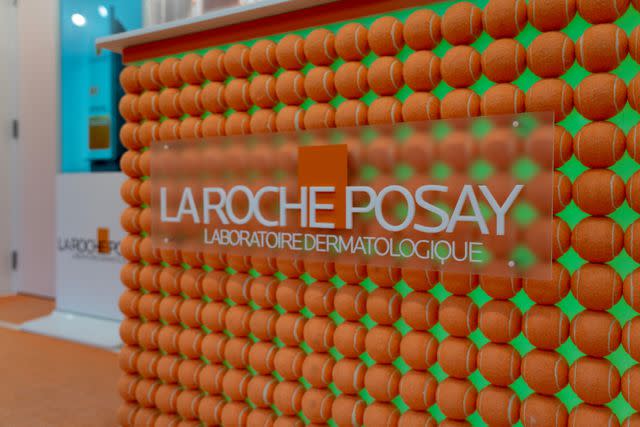
La Roche Posay
Smart Brands Are Adapting Early
“It’s really an opportunity that you didn't see beauty playing in this space at all,” says Kleo Mack, Chief Marketing Officer of Glossier. “[Brands] are trying to think of out-of-the-box ways to reach customers in places that they're not used to. It's no longer just about influencers and Instagram, but these athletes in their own right have become influencers."
Glossier, who started working with the WNBA in the throes of the pandemic when the athletes were performing in the bubble (“Wubble”) to promote the line of Body Hero products, saw the valuable connection between women athletes and their fan base before everyone else—during a time when the league wasn’t getting much support. “The athletes recorded content and really led our campaign,” says Mack. “At that time, we were the first beauty partner ever for the WNBA, which is exciting for us but also super disappointing to hear when we're in conversation with them that they hadn't gotten support from the beauty industry. For us, it’s about telling stories and people associating the brand with having a unique point of view on beauty, bringing people that are interesting and relevant—and culture—to the forefront of that conversation.”
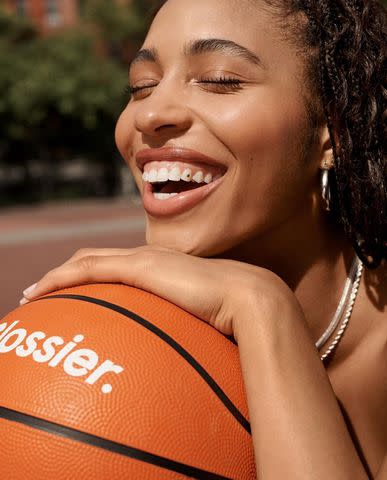
Ronan Mckenzie
Formula 1 is becoming more diverse and younger—almost one in three TV viewers is under 35. Season viewership for 2022 was over 1.5 billion. And currently, 40% of fans are female—a massive jump from 8% in 2017—which made Tilbury’s decision to partner with F1 Academy and managing director Susie Wolff a no-brainer. But more so, the partnership stands in hopes of encouraging more female drivers in the sport, as there’s never been more than 5% participation from women.
“Representation in sport is crucial to drive true diversity and inclusion,” says Charlotte Tilbury MBE, President, Chairperson, CCO, and founder of her eponymous brand. “I absolutely can see women racing in F1 in the next decade—or much sooner, I hope. The barriers to entry for women in motorsport, particularly F1, have been significant. Issues such as limited opportunities for young female drivers to progress through the ranks, lack of representation at higher levels of competition, and ingrained stereotypes about gender roles in racing have all contributed to the absence of women in the sport.”
Contributing to the growth of the fan bases and brand partnerships with these leagues is the media coverage of women’s sports. A Wasserman study substantiated the growth—the number is now 15% of total sports coverage. (Remember, brands love earned media.) If you’re in marketing, work for a beauty brand, and have reading comprehension skills, it seems abundantly clear that partnering with women’s sports—or at least targeting women sports fans—should be on the agenda as a category with substantial growth, built-in communities, and the various possibilities (and platforms) to captivate new fans of their own.
In other words, we have money on Tarte’s next influencer escapade: an 18-day extravaganza to Paris for the 2024 Olympic Games.
Read the original article on Byrdie.

